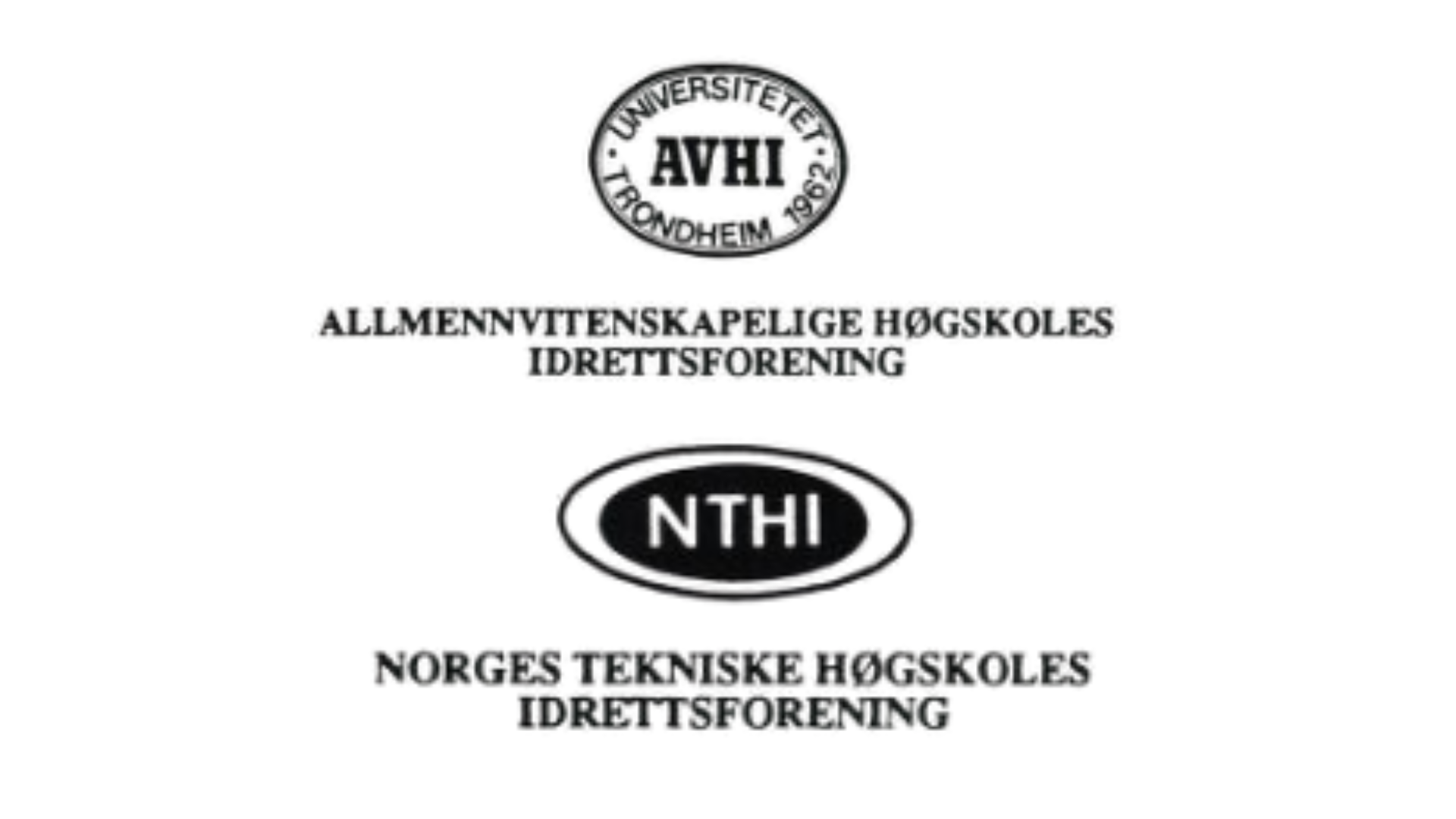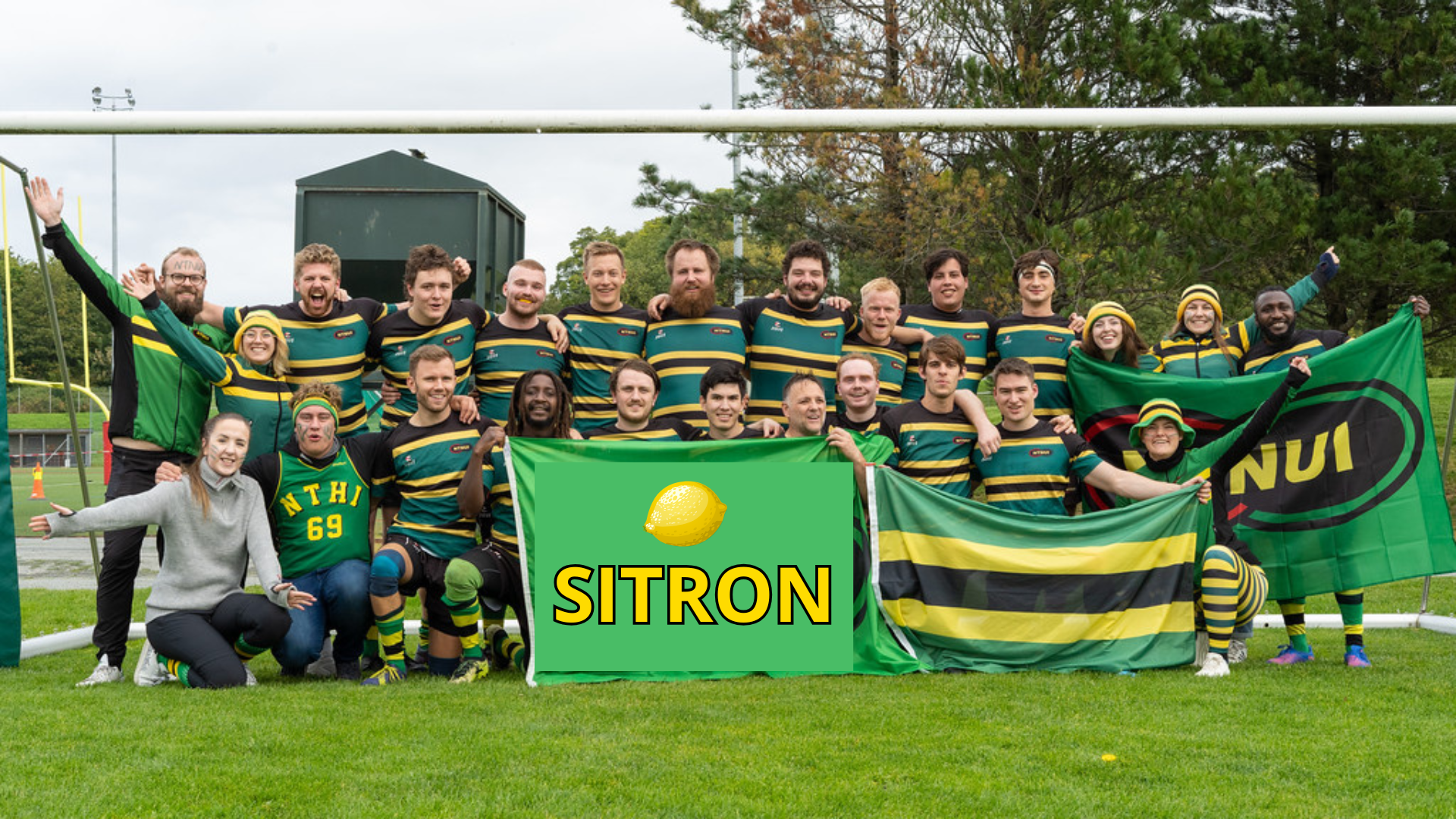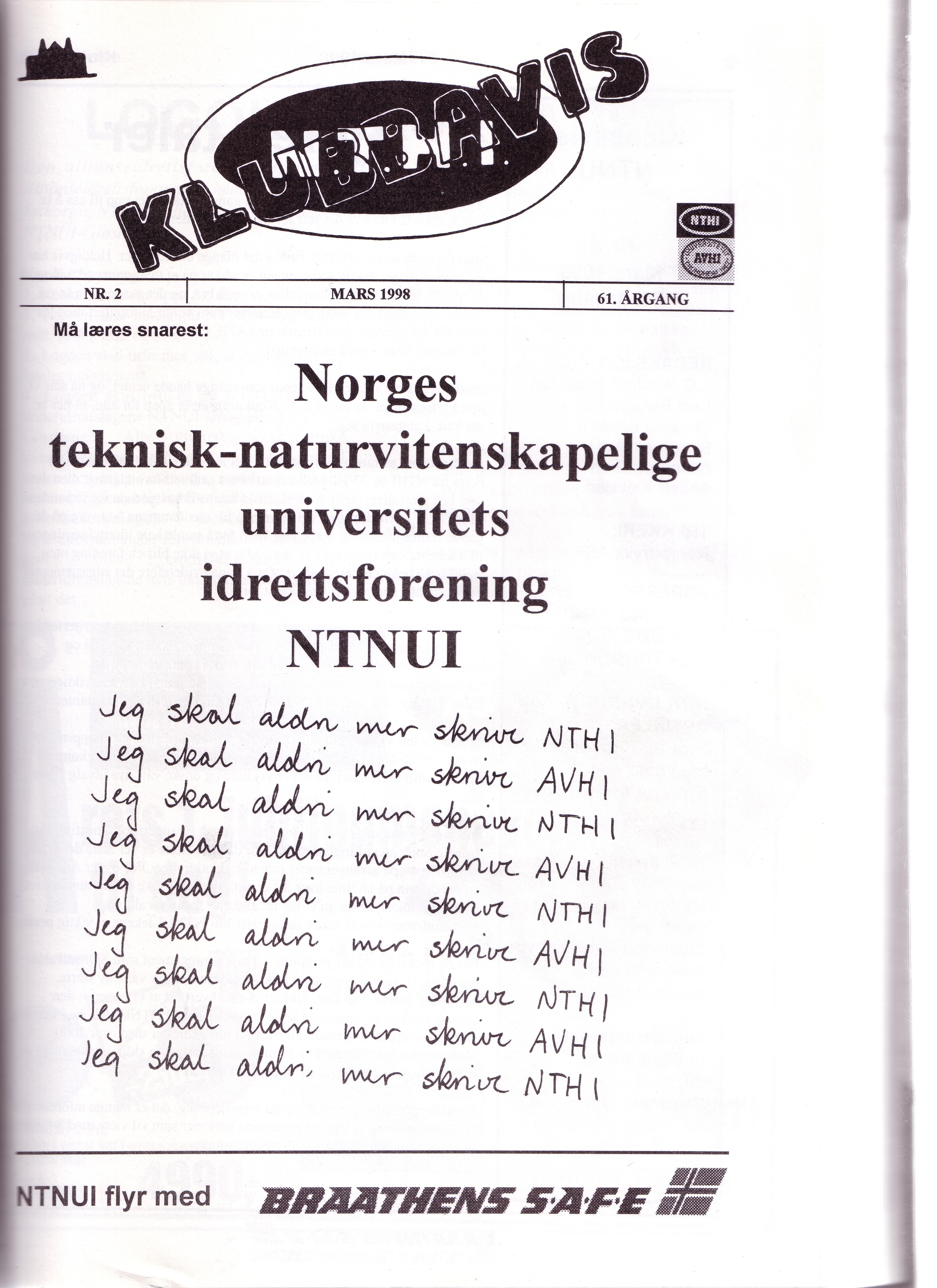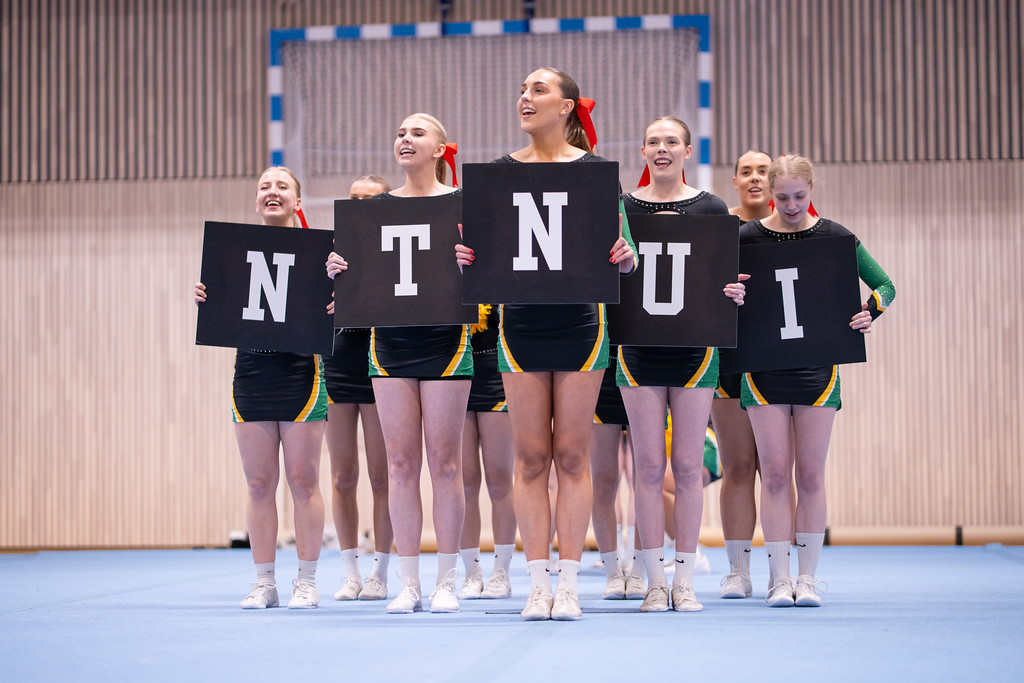Text: Emilie Faarup Storvik
Photo: Arkiv, NTNUI/Eivind Jølsgard/Leonie Richarz
This weekend, NTNUI celebrates 115 years of student sports and athletic joy. It is a fitting occasion to look back at an important piece of our history: how we ended up with the name NTNUI in 1998. The story behind our name is more than a curiosity. It reflects years of structured evaluation, broad democratic processes, and a student community that took identity seriously, while still allowing room for creativity.
The logos of AVHI and NTHI
Hårfagrekomiteen, Ured and the road toward unification (1995-1997)
In 1996, what we today know as Norges teknisk-naturvitenskapelige universitet (NTNU) – the Norwegian University of Science and Technology – was formed through a merger of Norges tekniske høgskole (NTH), Den allmennvitenskapelige høgskole (AVH), the university museum, the Faculty of Medicine, and the art and music conservatories in Trondheim. At the time, both NTH and AVH had their own student sports associations (called NTHI and AVHI, respectively), and a merger was now being seriously considered.
In the autumn of 1995, the general assembly of NTHI established a dedicated committee to negotiate with AVHI and explore organisational models. The committee formally constituted itself, adopted the name Hårfagrekomiteen (“the Committee of Harald Hårfagre” – a reference to the medieval Norwegian king), and originally consisted of nine members led by Oluf Bøckman, with Cathrine Ringstad as deputy chair.
Formal negotiations began in spring 1996. AVHI’s negotiators were members of their main board, and referred to themselves as URED (meaning roughly “The Unruly” or “The Fearless”). To ensure a professional process, both parties brought in academic facilitators: Inger Anette Wullf and Lisbeth Øyum from the Department of Organisation and Working Life Studies (ORAL) at NTNU served as neutral catalysts in the meetings between NTHI and AVHI.
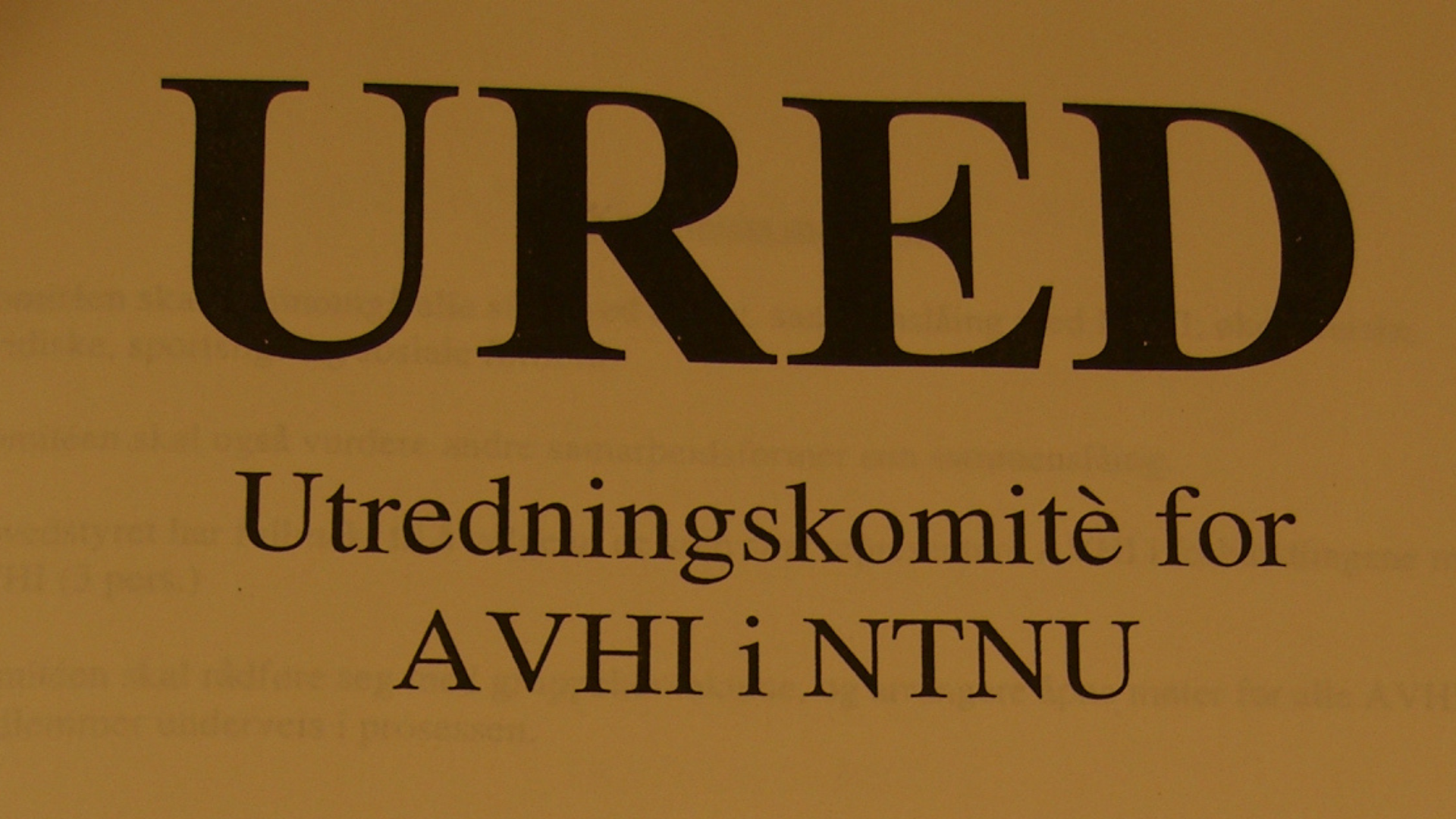
URED: Investigation commitee for AVHI in NTNU.
During the spring and summer of 1996, Hårfagrekomiteen and AVHI jointly prepared a discussion document that would form the basis for a major search conference held in autumn that year. 50 members from NTHI and 50 from AVHI were invited; 56 attended – approximately 30 from the NTHI groups and 10 from AVHI’s, in addition to representatives from both main boards, URED, and Hårfagrekomiteen. Working groups discussed the “current situation,” the “desired future,” and “how to get there.”
The conference report later became a key foundation for the formal recommendation, and for the agreement eventually put forward to the general assemblies.
The conclusion was clear: the best solution for student sports at NTNU would be to create an alliance sports association (allianseidrettslag, a Norwegian model where several semi-autonomous sub-clubs share a common organisational framework). This would secure continuity in league participation and preserve the diversity of sports environments across campuses and traditions.
NIF (Norges idrettsforbund – the Norwegian Olympic and Sports Confederation) officially approved the model. NTNU itself supported the process and allocated 72,000 NOK in preparatory funding.
17 Februar 1998: the name would be descided in Auditorium S5 at “Stripa”
The joint general assembly of AVHI and NTHI was held Tuesday 17 February 1998, in Auditorium S5, located at the main NTH campus corridor known as Stripa.
One of the key agenda points was the name of the new alliance sports association, along with review of the Law Committee’s recommendation, handling of written proposals from the floor (benkeforslag), and a multi-round written vote. The procedural rules were explicit:
- Brief presentation of the official recommendation
- Any benkeforslag (proposals from the floor) had to be submitted in writing
- The Law Committee would evaluate whether such proposals contradicted the merger agreement
- Even if they did, they could still be added to the ballot with two-thirds support in both NTHI and AVHI (by show of hands)
- This was followed by debate, test voting, and finally secret written voting until one name achieved over 50%
- The assembly would then also vote on whether the organisation should be termed idrettslag (“sports club”) or idrettsforening (“sports association”)
The name proposals: From institutional gravitas to pure conceptual absurdism
he officially serious proposals included:
- NTNUI – Norges teknisk-naturvitenskapelige universitets idrettsforening
(“The Norwegian University of Science and Technology’s Sports Association”) - INTNU – Idrettslaget ved Norges teknisk-naturvitenskapelige universitet
(“The Sports Club at the Norwegian University of Science and Technology”) - NTNI – Norges teknisk-naturvitenskapelige universitets idrettslag (similar meaning as above, but with reversed word order)
- SINUS – Studentidrettsforeningen til Norges teknisk-naturvitenskapelige universitet (“The Student Sports Association at NTNU”)
However, several authentic, but less conventional benkeforslag were also submitted, among them:
- SITRON – Studentidrettslaget i Trondheim (“The Student Sports Club in Trondheim”) (Sitron also means lemono in Norwegian)
- STIL: Studentenes idrettslag ved NTNU (“The students’ Sports Club at NTNU”)
- NTHI & The Loosers – yes, written exactly that way
- IDUAS – Idrettsforeningen for Universitetet på Dragvoll og den Allmektige Samskipnaden (“The Sports Association for the University at Dragvoll and the Almighty Student Welfare Organisation
How close where we actually to becoming “SITRON” (Lemon) instead of NTNUI? The writer of the article has tried to illustrate a fictional scenario of this, by using the team picture of the very talented Rugby-players. Photo: NTNUI/Eivind Jølsgard
Several of them came with justifications. For instance: “SITRON is short, positive-sounding, and carries strong commercial potential for the future.” Or “IDUAS could become very powerpul – if one dares to own it”.
Benkesuggestion no. 16, proposed:
“We take the new NTNU logo (the one with a cirle inside a square), rotate it vertically and use it as our name. When people ask how to pronounce it, we shape our moth like a square, place the tongue as the circle and produce a long, resonant sound.
This results in ambiguous answers, and different answers each time – at least whenever the name must be written using ordinary ASCII characters. Eventually, we will gain a mysterious and intriguing aura around the entire sports association.
We will gradually only be referred to as ‘symbol’, ‘The Club Formerly Known As NTHI’,
‘The Organization Formerly Known As NTHI’, or simply ‘T.O.F.K.A.N.’
The concept has been tried before by American pop artists. Experience has shown that such a change does little for performance — but holy *** does it create delightful chaos.
And it will be a perfect revenge on the incompetent administration at NTNU, when all the bitterly student-hostile secretaries have to spend the rest of their working lives searching their keyboards for ‘that weird key’.”
From the NTNUI Club paper march 1998, where it says “I will never ever write AVHI/NTHI” at the front page.
And then, we ended up with NTNUI
The Law Committee ultimately recommended NTNUI as the first choice.
Not because it was the most exciting option, but because it was neutral, rooted in tradition, and unproblematic when dealing with actors outside the association.
Unfortunately, the full voting protocol from the meeting has not been preserved — so we do not actually know how close we came to being named “NTHI & The Loosers” during the general assembly vote in 1998.
NTNUI became NTNUI. And thank goodness for that?
Today, it is Norway’s largest sports association – and quite possibly the world’s largest student sports organisation – with over 23,000 members. And a name that now carries real weight, both within the student community and in Norwegian sport.
Still, on our birthday, it is oddly delightful to imagine that in another universe,
we might be called SITRON, SINUS, or The Organization Formerly Known As NTHI.
Happy 115th anniversary, NTNUI.
We could have become something entirely different, but we became us.
Photo: NTNUI/Leonie Richarz

